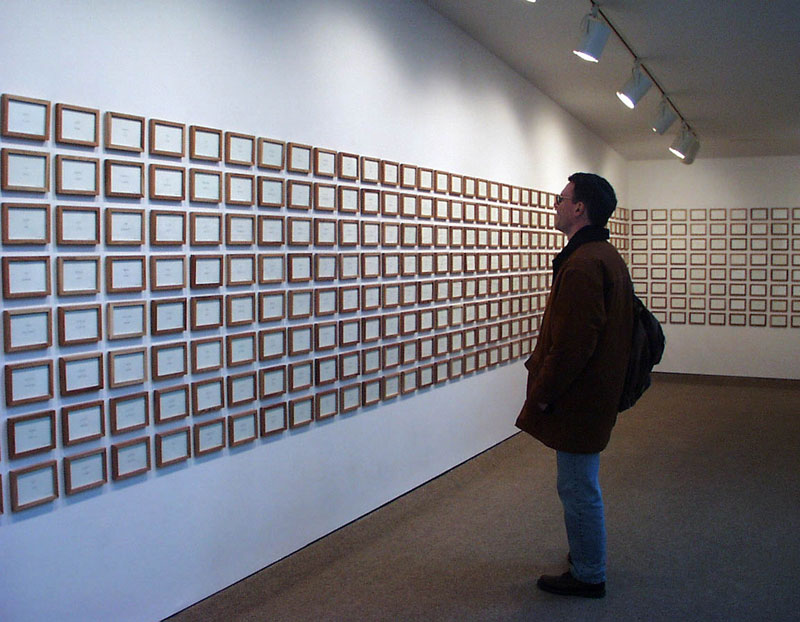
The principle of “intrinsic interest” is often brought up when artists are taught the principle of “weight” in creating a balanced composition. The example I remember from my high school art teacher was how a painting that depicts Niagara Falls on the right side of the canvas can be “balanced” with a tiny human figure on the left side of the canvas. This is because the human figure carries more “intrinsic interest” to the human eye (humans, it seems, are more interested in humans than in waterfalls). Therefore, since only humans look at paintings, a tiny human figure and a huge waterfall can carry the same “weight” in a painting’s composition. This idea has remained with me since that time, and, for my exhibit at Barbara Krakow Gallery, I would like to explore this precept. I recognize that all commercial art galleries appreciate artists who create artwork that is interesting to their regular clients. Artists, in turn, like to please their galleries. In this way, art can often be “shaped” by a particular gallery’s community of clients, through a kind of natural evolutionary process. This could be one of the reasons that, over time, artists in one particular gallery will tend to make similar work. As I create my first solo exhibition in Boston, I am hoping people here will be pleased by my work. In his famous book “How to Win Friends and Influence People,” Dale Carnegie teaches us the importance of remembering people’s names by reminding us that “…the average man is more interested in his own name than in all the other names on earth put together.” I’ve asked Barbara Krakow to provide me with her Boston area mailing list, and I’ve used the first names of these people to depict this particular community of individuals. I have assumed that, as with any true community, many of these clients maintain relationships with many of the other clients. For instance, one of the gallery’s clients may be another client’s stockbroker, psychoanalyst, lover, parent, friend, or enemy. In some cases, one client may have multiple relationships with another client: one client might at the same time be another client’s dentist and ex-boyfriend, for example. To honor Barbara Krakow Gallery’s Boston clients, I am creating drawings to represent each individual and the complexity of their community. There are over 30,000 possible pairings; I am depicting 1000 of these pairings with 1000 drawings. Allan McCollum March 2000
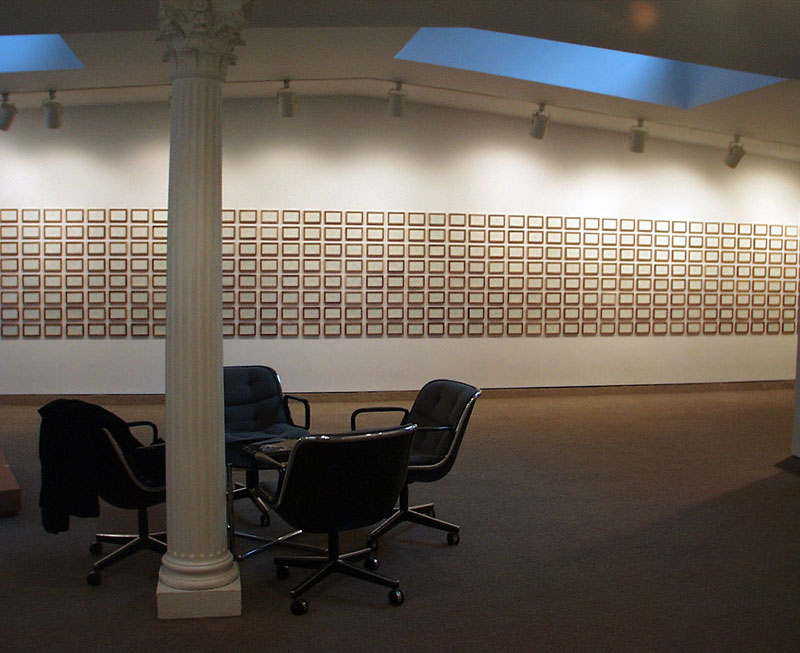
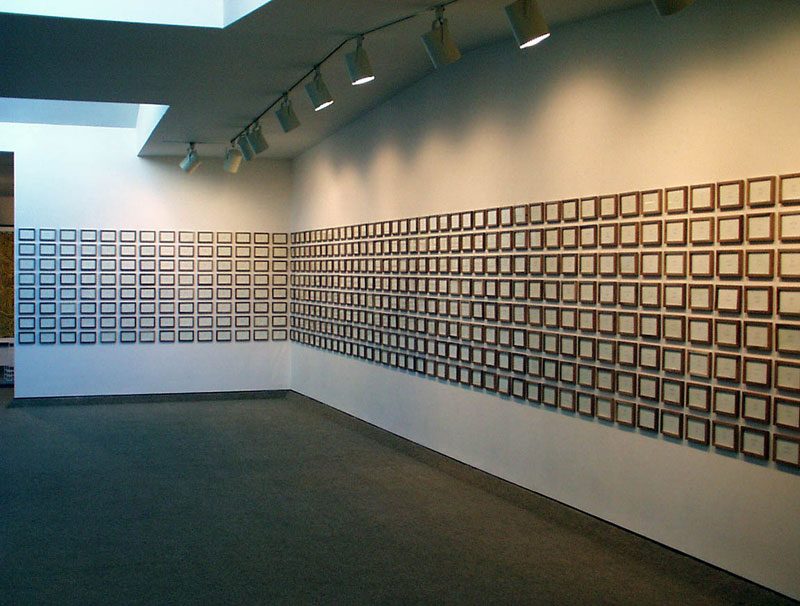
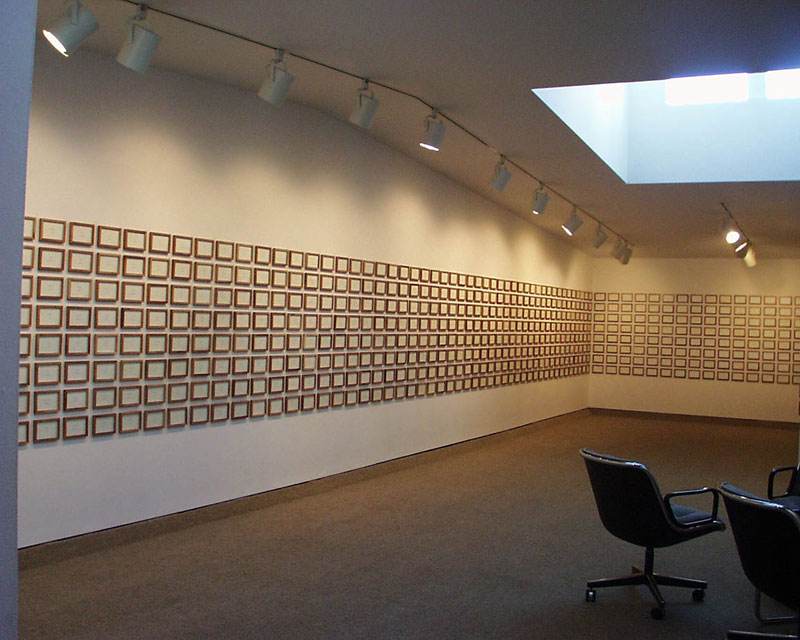
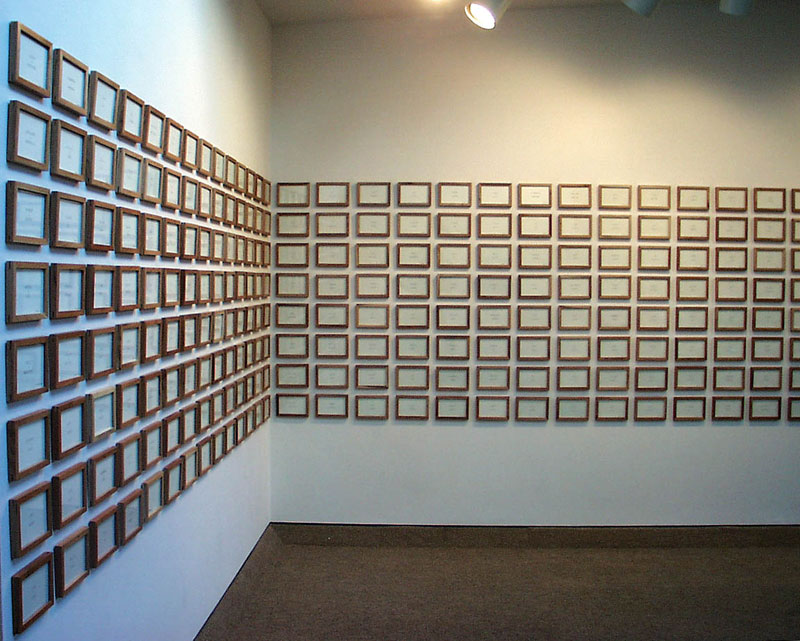
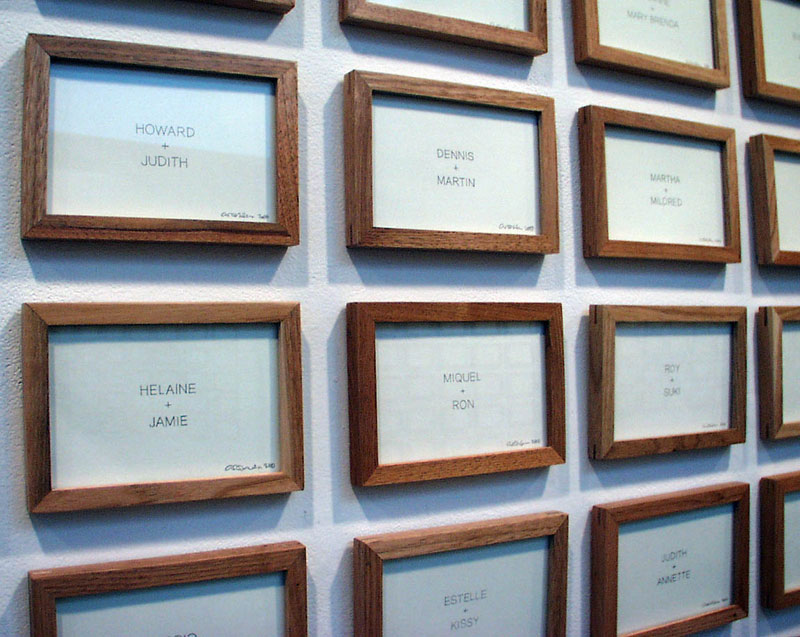
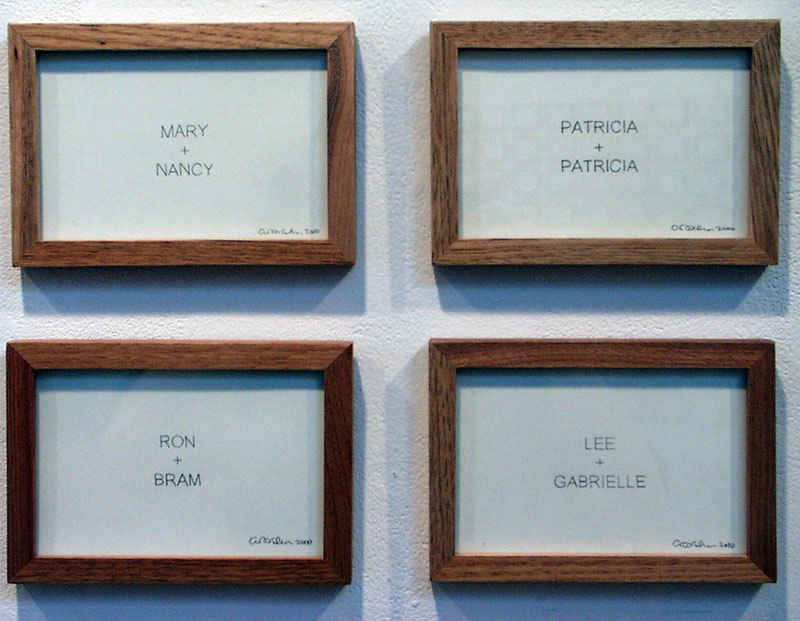
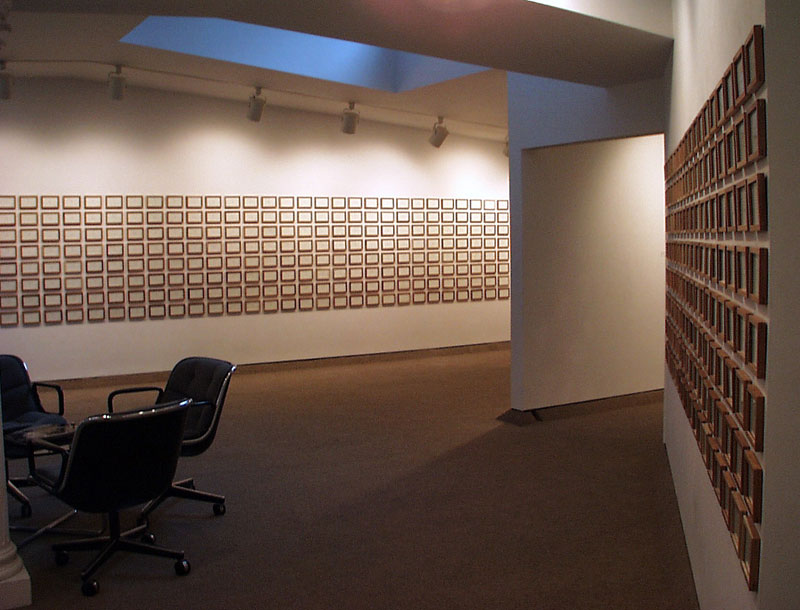
No results found.
10 Newbury Street, Boston, Massachusetts 02116
617-262-4490 | info@krakowwitkingallery.com
The gallery is free and open to the public Tuesday – Saturday, 10am – 5:30pm